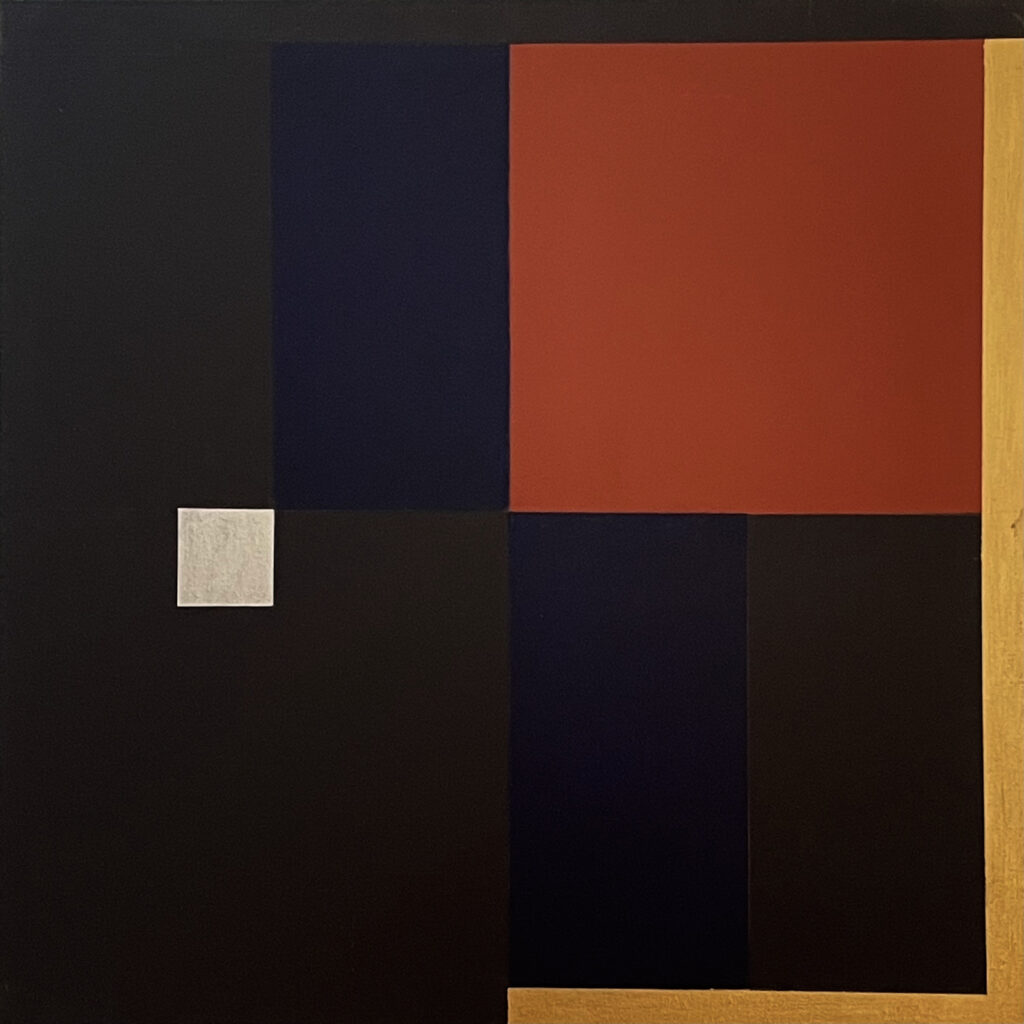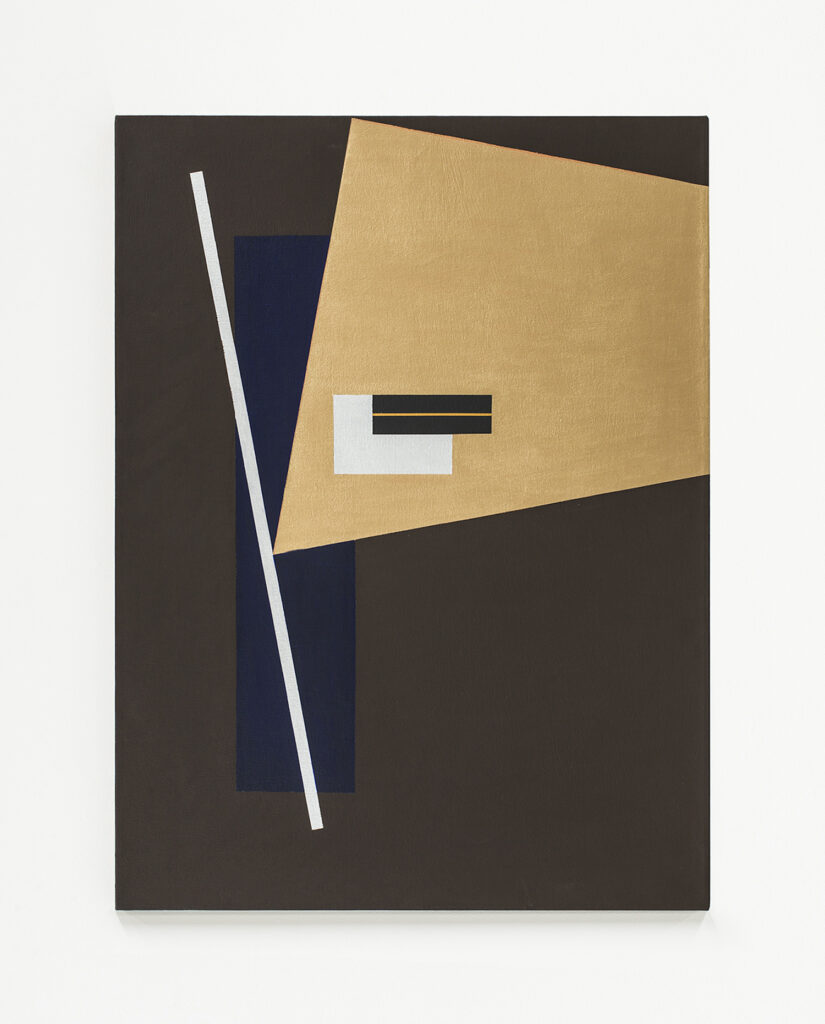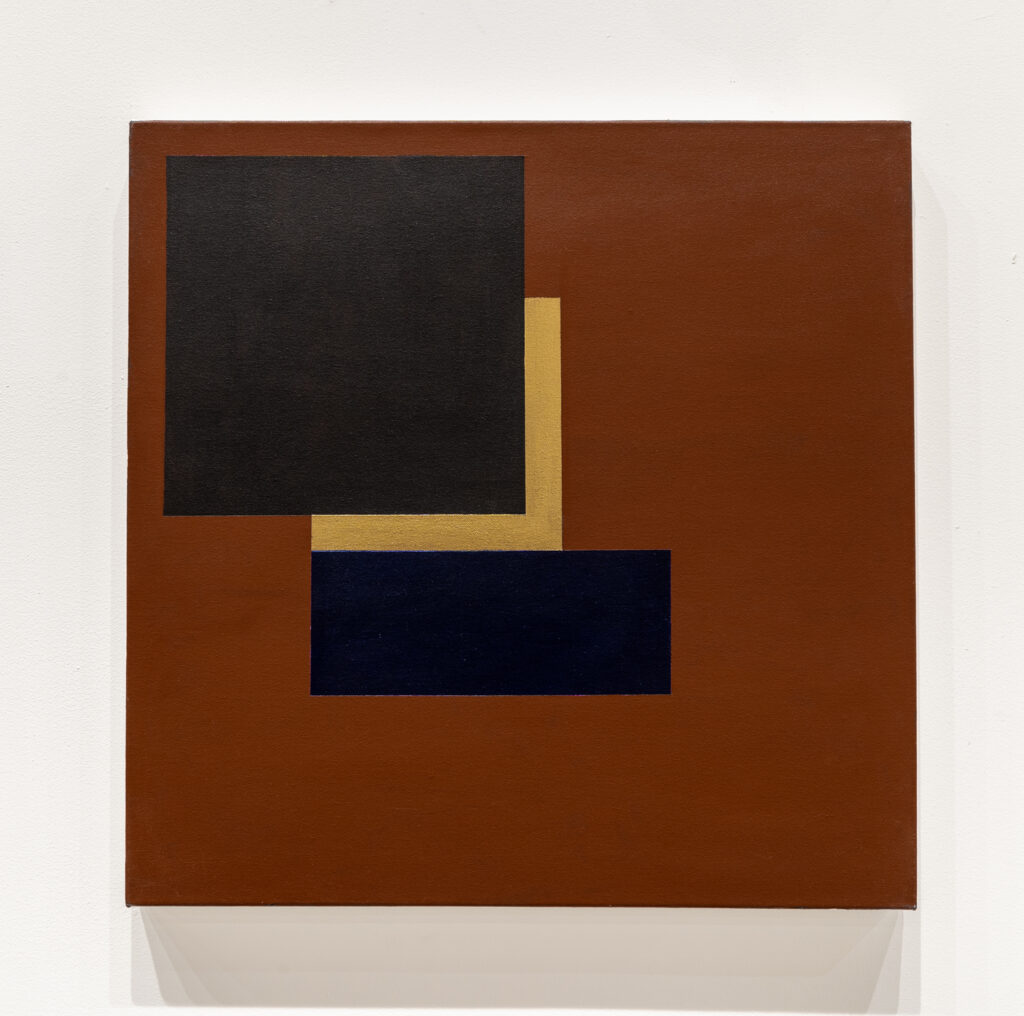by Mary Hrbecek

The Scully Tomasko Foundation presents “Early and Recent Work,” an exhibition of twenty-one acrylic and metallic paintings on canvas and an installation of thirty-three ink on paper drawings by curator, art historian, teacher and artist Robert C. Morgan. The paintings impress the viewer in a timeless cohesive way as though they were organized as a site-specific project that is designed to catch the cool ambient aura that pervades the space filling it with diffuse white light, reminiscent of a secluded sanctuary. The salient tones of warm earth brown and dark blue-brown in many of the works act as triggers to subconsciously generate remembrances of the somber ambience of the early Sienese Italian Renaissance. As a group, the paintings create a hushed atmosphere that invites contemplation and reverie, triggered by the clear minimal content and the conceptual reductive intentions they embody. The metallic paint interacts with the earth tones to mitigate their absorption of light by reflecting it; the effect is both calming and stimulating. Perhaps because the works radiate a spirit of peace, they evoke a sense of joy that seems infused with personal meaning.
There is a playfulness in effect despite the obviously serious intensions conveyed by the paintings that provides a sense of ambiguity, despite the clearly carved nature of the highly specific honed smooth shapes.
There are architectural underpinnings in many of the works in the Loggia series, while other pieces suggest a debt to natural configurations. They evince the mental action of an architect whose job requires that he get the spaces to fit perfectly within the whole structure at hand; the thirteen paintings in the “Loggia” series share this essential quality. The magnitude of each shape in relation to the interrelated elements forms a code within the confines of the four edges of each work. The “Elements, Parts I and II” recall game-boards that create enigmatic hidden meanings which relate to secret undefined puzzles. They suggest chess boards that display their subjects with uncanny discretion and respect.
Light and darkness play a major role in the unfolding dramas, as the viewer’s visual perception is sharpened by the necessity to gaze deeply at closely mixed tones, to discern the end and beginning of many of the forms. With continuous viewing, the shapes may appear to vibrate, to move, to resist efforts to pin down their perimeters. Although the works may seem simple, their reduced number of elements compels the viewer to detect changes wrought from barely discernable alterations in movement and placement of shapes.

Clearly the paintings fall into the rubric of the honed geometric forms and primary structures characterized by alterations that identify them within the post-painterly abstract genre. The play of movement and spatial divisions challenge the eye to perceive the minuscule changes within the context of this visual dance.
The pieces radiate thoughtfulness; equally, they are well defined, creating pictorial space at times by overlapping flattened forms, or by the juxtaposition of warm and cool hues to generate depth. Through his use of metallic paint and earth tones, the artist intends to capture the moment when light is reflected and absorbed, embodying the reuniting of opposites set forth in the Tao Teh Ching, 500 B.C. Morgan’s use of line animates the works, drawing the eye in unexpected directions through and around forms to differentiate and delineate them. The earth-tones in many of the “Loggia” paintings recall raw nature as a backdrop that surrounds sophisticated dark shapes. The earth red and metallic gold break with traditional notions of minimal essence to create an offshoot rich in suggestiveness.

“Lissajous 3” and “Lissajous 2” disclose quite diverse concerns when compared with the “Loggia” paintings. Both pieces display adorned gold and metallic circles that could represent planets or even machine parts separated from their mechanisms. In the rectangular and square formats of the “Optical Flip” (diptych), 2010, the artist carves the terrain of each segment into three similarly sized portions. Tension develops as the eye travels horizontally across the format, to be pulled back to center by the elongated pale gray rectangles. The subtle play of vertical thin and thicker bars in the middle draws the eye and activates the mind’s curiosity. “Pyramid Shift” creates an area within a black plane that holds the gray pyramid at a distance from a thin rod that carves the warm rectangle. This structure establishes tangible space that invites the viewer’s speculation. The “Living Smoke and Clear Water” installation of Chinese ink on Conte paper drawings flows organically from one to the next, giving the impression of small Haiku poems quickly noted, in a reverie engendered by the attributes of the materials and the vision of nature.
From the standpoint of an instinctual, intuitive observer who derives essence and intentions experientially, this exhibition discloses a tremendous reverence for each separate form and each relationship in which the shapes participate. Care and investment define each piece. If art can embody love, I believe there is evidence of such feeling in these paintings.
